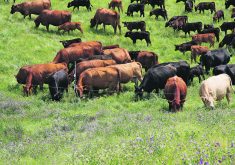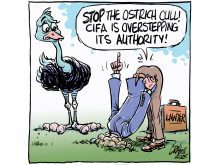Hog production uses a lot of water
The groundwater that supplies farms, homes, industries and cities is being depleted across the world, and in many places faster than in the past 40 years, according to a new study.
Manitoba had its own brush with low water supply in 2021. Drought conditions impacted availability for spraying, livestock, irrigation and human consumption.
The situation being faced by many Manitobans poses the following question: “How will this affect the gargantuan hog industry in Manitoba and its huge demands of water consumption?”
Read Also

Budget seen as fairly solid, but worrying cracks appear
The reaction from the agriculture industry to prime minister Mark Carney’s first budget handed down November 4th has been largely positive.
As a matter of fact, water usage estimates in swine production were introduced at the hearings by the Manitoba Clean Environment Commission of 2007. Also, a 2001 study by DGH Engineering broke down the estimated water use by type of operation and function at 89.5 litres per sow per day.
As an example, take the number of Manitoba sows (currently 378,000), multiply by 89.5 ( to get the number of litres per day) and multiply that by 365 to get a rough estimate of the volume of water used per year.
The water usage figures for hogs are astounding — daily 33,831,000 litres x 365 = 12,348,315,000 litres yearly.
It’s enough to fill 4,940 Olympic size swimming pools — each pool holds approximately 2,500,000 litres of water.
Manitoba’s Sustainable Development Act was in place from 1997 through to 2018. With the proper wording of “shall” in place, rather than “should,” the act would have been an extremely helpful source of legislation in regulating the uncontrolled expansion of the hog Industry, appropriate care of the environment, addressing human health issues and the social effects of any proposals.
John Fefchak,
Virden, Man.
Burning food does not help the hungry
The Jan. 4 issue The Western Producer reported that the province of Manitoba had recently announced it would provide Azure Sustainable Fuel Corp. with $2.9 million over a period of two years to study the feasibility of converting food — canola — into aviation fuel.
The Jan. 11 issue of the Producer informed me that the residents of nine of the world’s countries are currently experiencing “alarming rates of hunger.”
I combined these two bits of information and envisioned the residents of these nine countries described as experiencing “alarming rates of hunger” looking skyward at the exhaust contrails left by passenger airliners as they fly overhead, propelled by burning food.
Viewing these contrails will not in any way relieve their “alarming rates of hunger,” but I strongly suspect it may provide them with some serious food for thought.
Fred Tait,
Rossendale, Man.
Calm prairie news a welcome respite
A quiet read of The Western Producer is a welcome break from the barrage of contentious word vomit battering me from every news outlet on every subject imaginable.
Everyone is clamouring for attention — usually imposing a completely artificial polarization to try to sell me on something — in what seems like a hysterical mass psychotic breakdown, and that includes government.
The calm of humdrum prairie news serves as kind of coffee row psychotherapy.
Thanks for that.
Terrance Martin,
Sooke, B.C.














